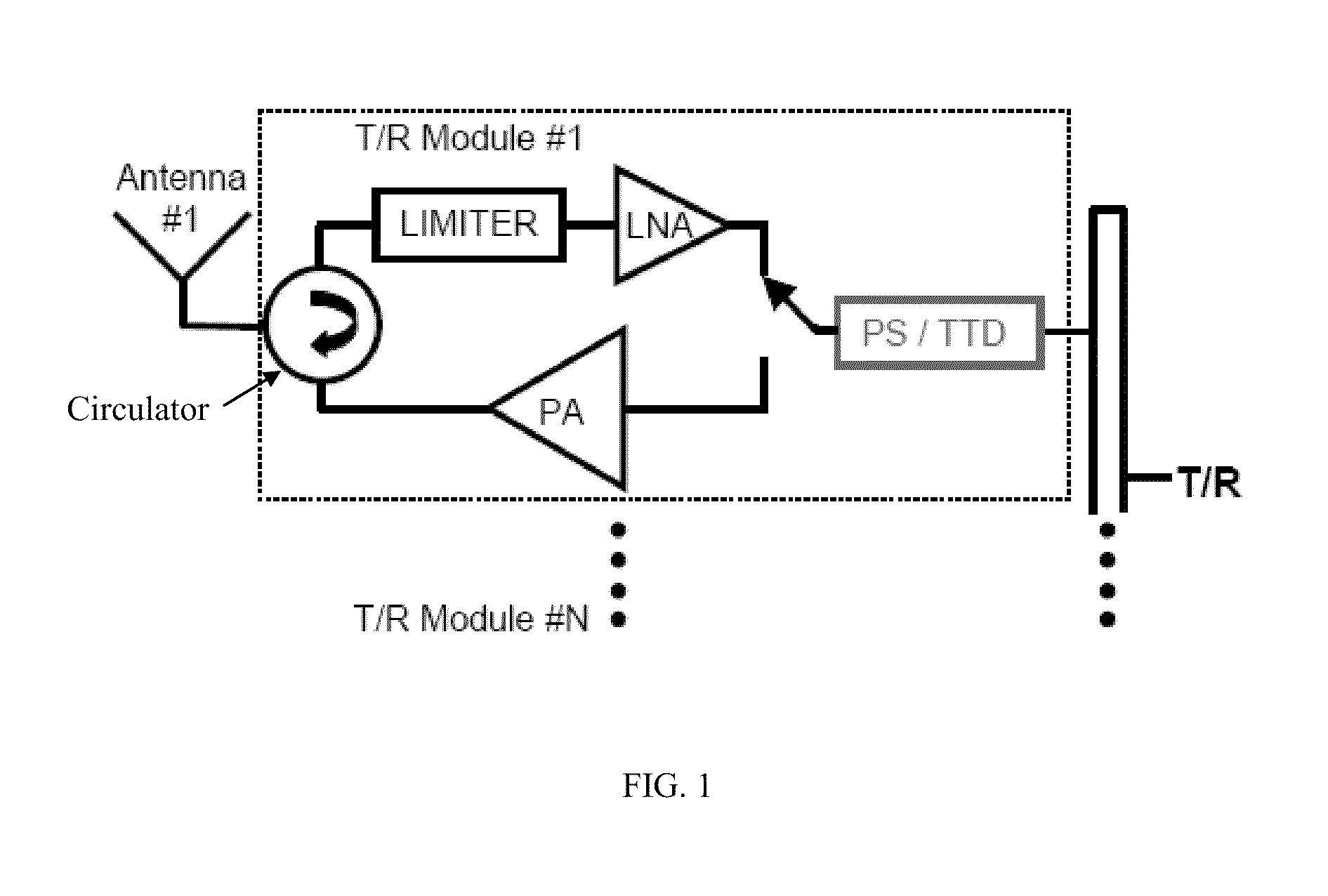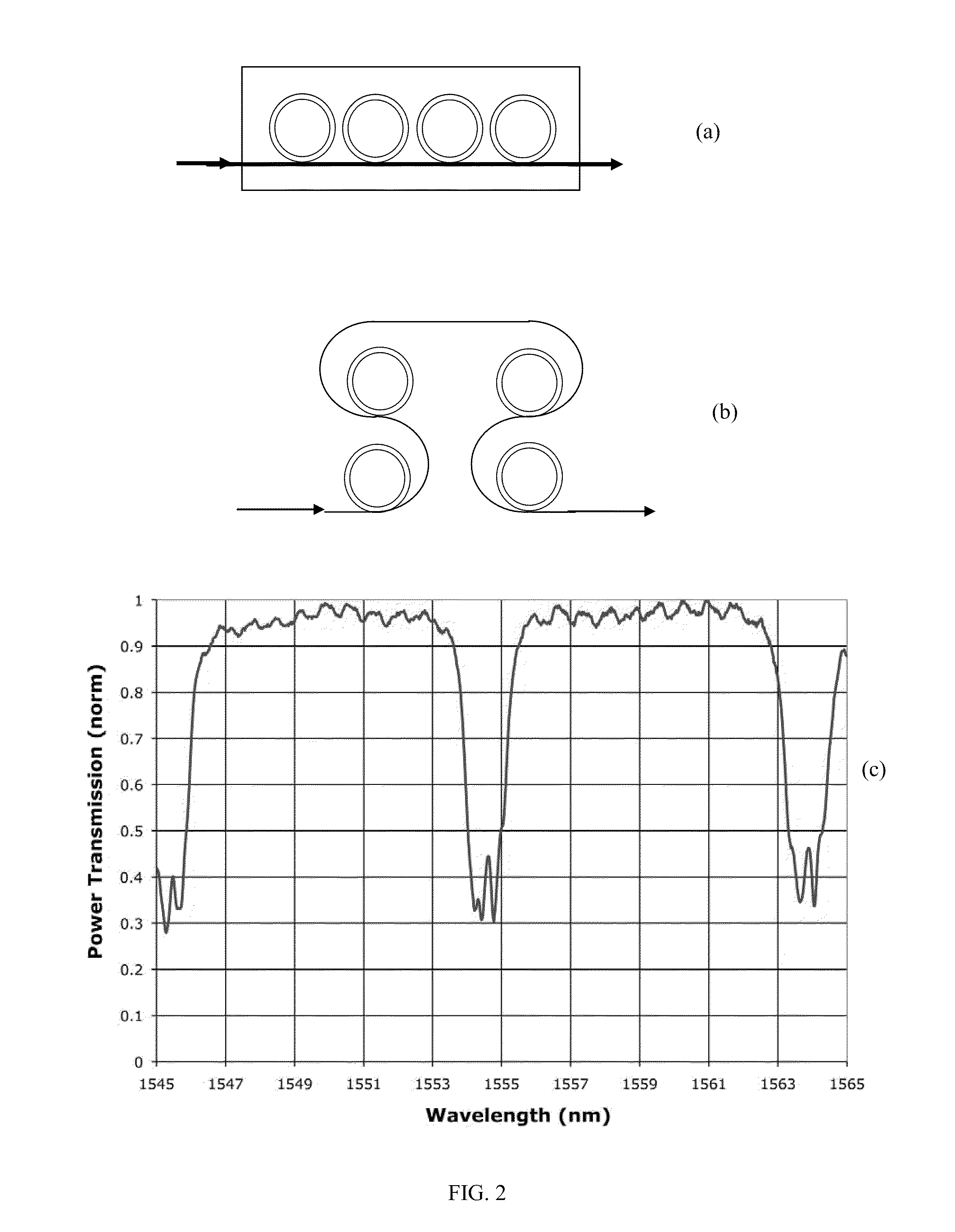Tunable optical group delay
a delay and optical group technology, applied in the field of active array antenna systems, can solve the problems of reducing device performance, inherently small photonic devices, and often long time constants involved, and achieve the effects of increasing the tuning speed of the device, increasing heating, and fast tuning
- Summary
- Abstract
- Description
- Claims
- Application Information
AI Technical Summary
Benefits of technology
Problems solved by technology
Method used
Image
Examples
Embodiment Construction
[0040]Optical delay lines typically use near infrared (NIR) light, however the disclosure is not limited to this spectral range. The term “optical” in the present disclosure comprises visible, near infrared, infrared, far infrared and the near and far ultra-violet spectra.
[0041]The prior art shows that the phase shift in the SCISSOR delay line (shown in FIG. 2 (a)) with N rings each having a round-trip time τ can be written as tan
[0042](ΦN)=κ2sin(ω-ωr)τ(1+ρ2)cos(ω-ωr)τ-2ρ(1)
[0043]where the resonant frequency is ωr=2mπτ−1 and τ is around trip time, and the coupling between the resonator and waveguide is κ=√{square root over (1−ρ2)} The group delay can then be written as
[0044]Td(ω)=∂Φ(ω)∂ω=Nτ1+ρ1-ρ-Nτ3(1+ρ)ρ(1-ρ)3(ω-ωr)2+112Nτ5(1+ρ)ρ(1+10ρ+ρ2)(1-ρ)5(ω-ωr)4+…==Td0-Nβ3(ω-ωr)2+Nβ5(ω-ωr)4+…(2)
[0045]where we have introduced higher order group delay dispersion (GDD) terms β3 and β5. It is these terms that are responsible for the different delay experienced ...
PUM
 Login to View More
Login to View More Abstract
Description
Claims
Application Information
 Login to View More
Login to View More - R&D
- Intellectual Property
- Life Sciences
- Materials
- Tech Scout
- Unparalleled Data Quality
- Higher Quality Content
- 60% Fewer Hallucinations
Browse by: Latest US Patents, China's latest patents, Technical Efficacy Thesaurus, Application Domain, Technology Topic, Popular Technical Reports.
© 2025 PatSnap. All rights reserved.Legal|Privacy policy|Modern Slavery Act Transparency Statement|Sitemap|About US| Contact US: help@patsnap.com



